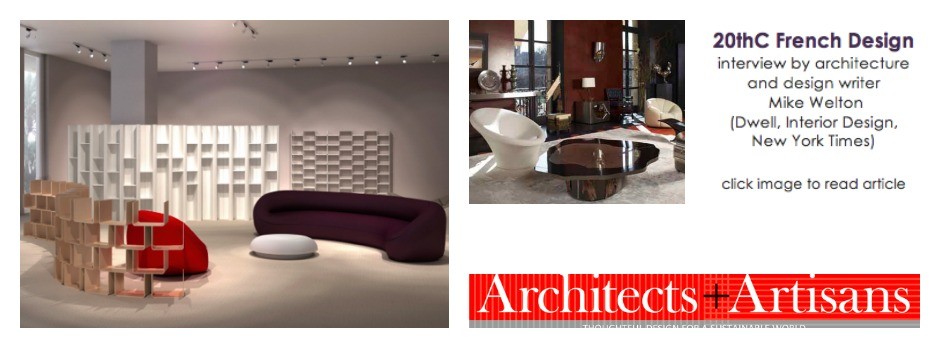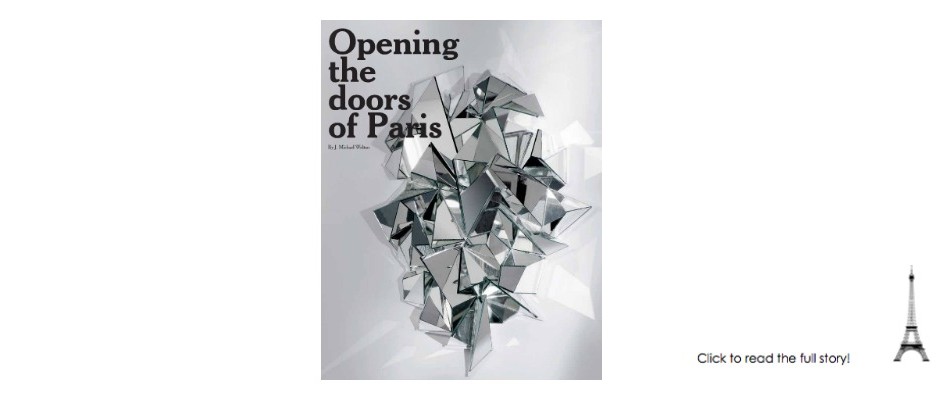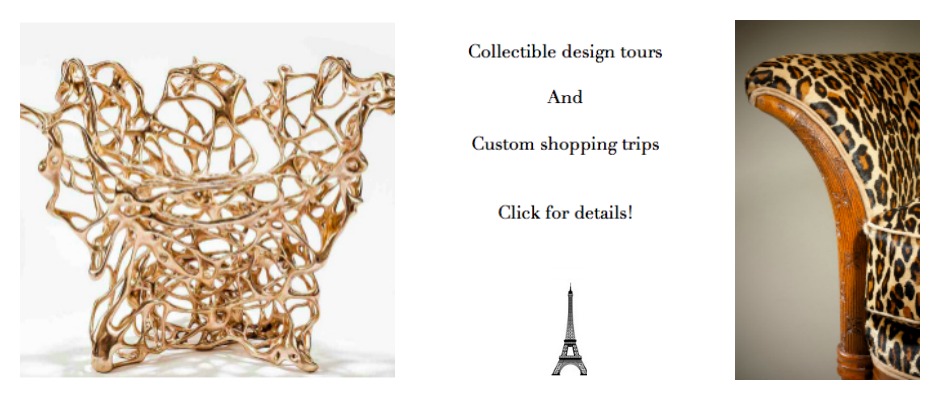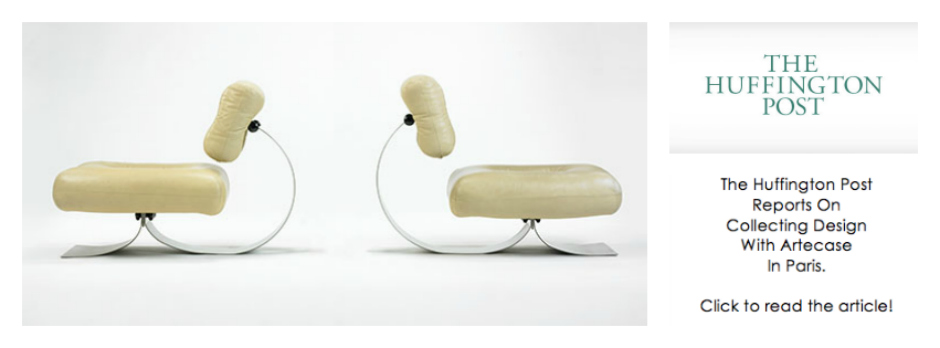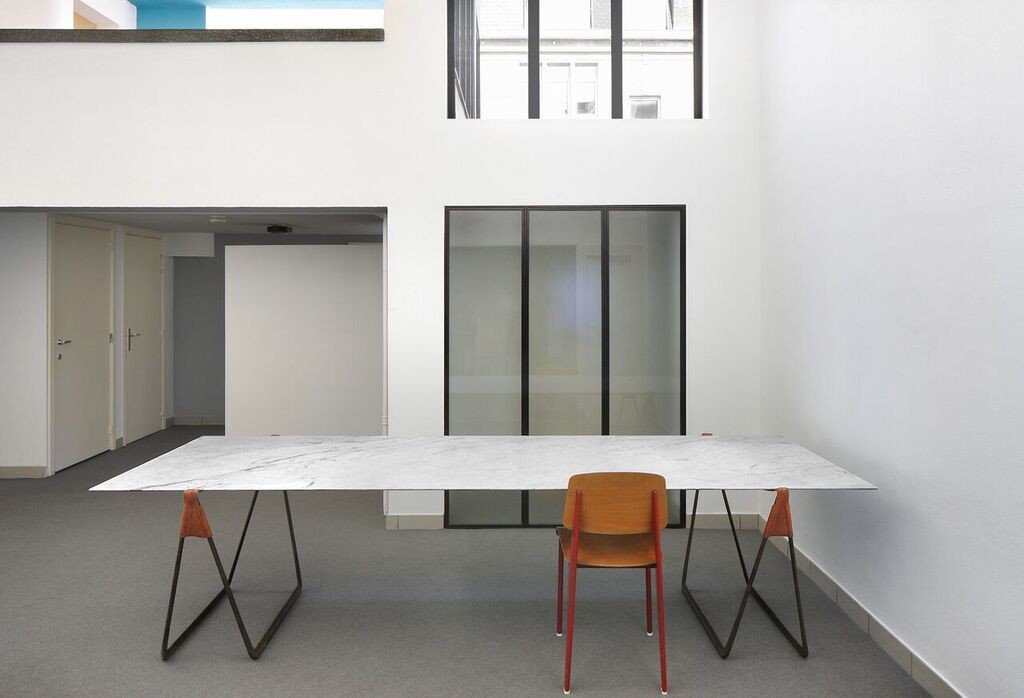

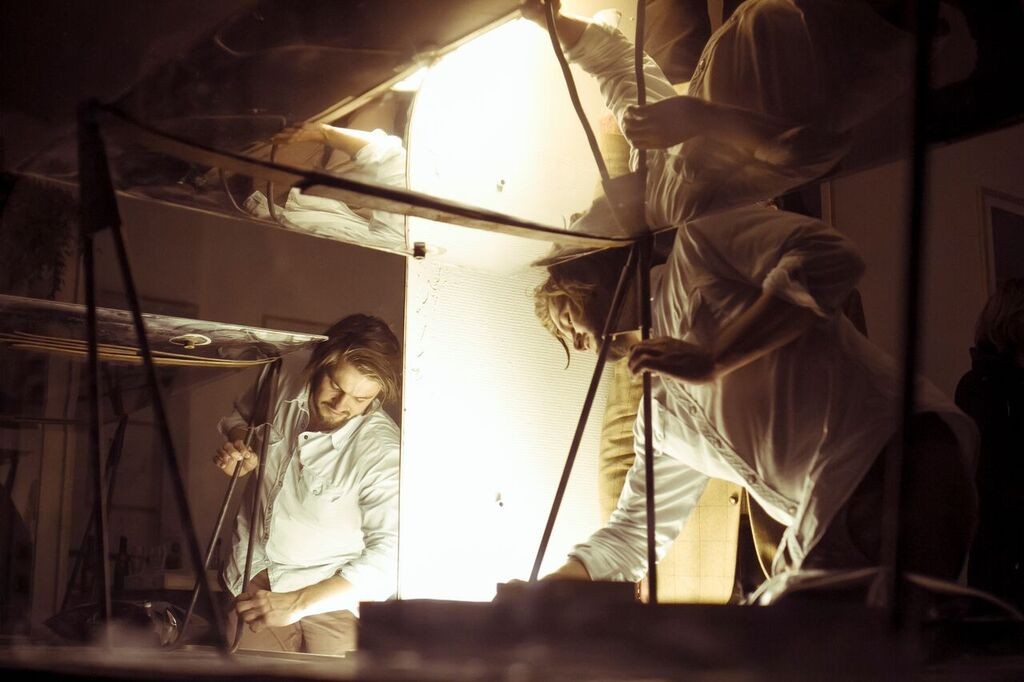 Ben and the In Vein table. Image courtesy of LRS photography.
Ben and the In Vein table. Image courtesy of LRS photography.On the other hand, nowadays, I notice that I can just have a sudden image in my head having been inspired by something that I see. This is different and much quicker. I don’t find myself running to the library anymore to dig into a certain problem/technique/material like I did when I was a student. Furthermore I am tending more towards sculptural work, as you can see in my work InHale low table and I am working on a new collection called InStock which was inspired by glass and the pallets with reclaimed building materials which I grew up with. I realize more and more that my designs are very personal, my background has got a huge and positive influence on my work.
The plastic arts are super inspiring to me in many ways: aesthetically, dramatically, in the exploration of materials, shapes, aesthetics and feelings. There are no boundaries, as in function for design. Materials, their boundaries and their possibilities also inspire me profoundly as well as techniques and technical challenges. Old crafts and new innovation and playing around on the boundaries of these techniques fascinate me. I use old techniques on other more contemporary materials. And the other way around too – today we have CNC techniques and machines that we can use with those old materials giving us more possibilities than ever. To me those 3D and CNC techniques are the contemporary crafts.
~~

The In Vein table up against the wall. Image above courtesy of Filip Dujardin
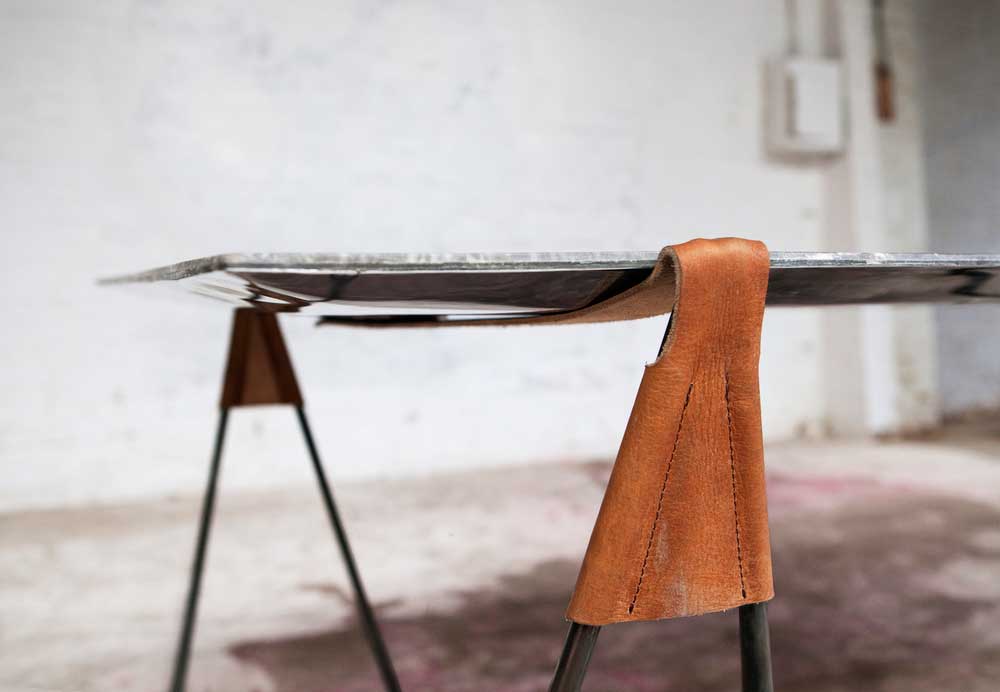
Detail of leather strap on the In Vein table. Image above courtesy of Luca Beel.
You won the Prize for Contemporary Design for your brilliant ‘In Vein’ table at PAD Paris this year. Could you take us through your thinking behind the design of it? This table took me about a year to develop (2013). The starting point was marble, a material that is very familiar to me and I wanted to use it for my end project on the VOMO course in Design at Thomas More in Mechelen. I literally summed up all characteristics that come to mind when thinking of marble : ‘Heavy, expensive, cold, kitsch, breaks, hard, old, thick, …’ After a while I decided to make a lightweight marble table supported by trestles because it goes totally against all these characteristics. You can feel this on very first sight of the table. I believe this is the strength of this piece, everyone is immediately struck by the fact that this is ‘impossible’. The In Vein table is probably one of the lightest marble tables ever made: the 3m version is about 65 kg. Another important thing is that every choice in material, construction, shape was like an obligation and absolutely necessary for constructional reasons. This resulted in a well balanced material mix that works really well in terms of aesthetics. The aesthetics are a result of choices made in order to have a perfect construction: ‘aesthetics follow construction’. To me this work is all about design, pushing the limits of materials and techniques to realize a new kind of table.
~~
InHale tables in marble with metal bases inflated using the hydrofoil technique, 2014
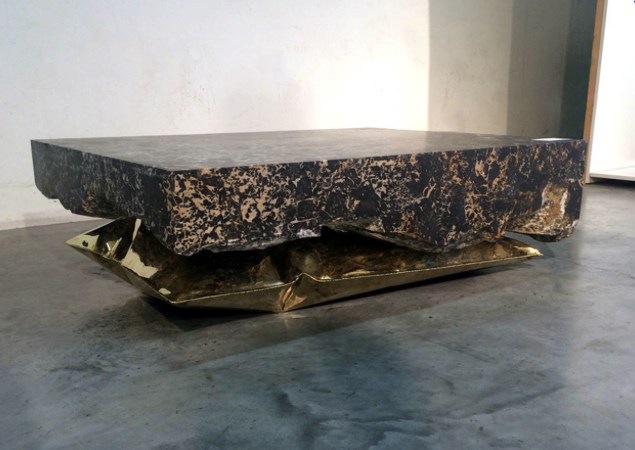
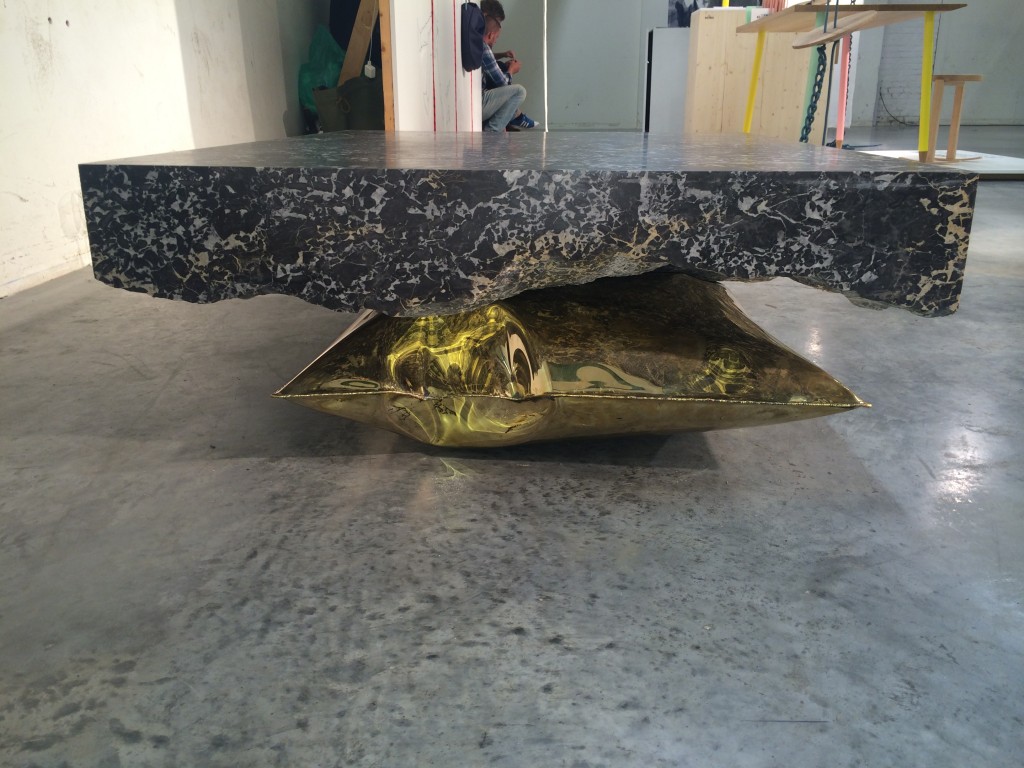
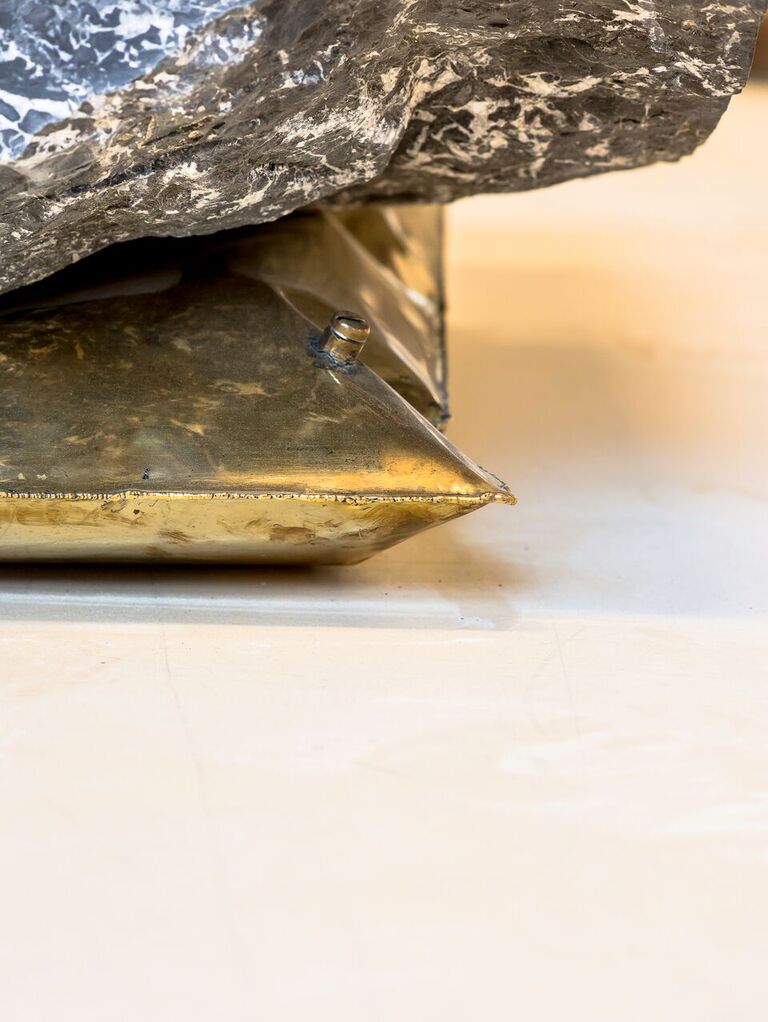
Image above courtesy of Tom Van Remoortere

Image above courtesy of Filip Dujardin

Image above courtesy of Filip Dujardin
Could you show us another of your pieces and tell us about it? InHale came right after In Vein and was partly inspired by it. I use the same technique of hydroforming the metal as I did for InVein. For InHale I started with a rough block of St Anne marble from Belgium. This marble is very exclusive since the quarry closed half a century ago. My family bought the left over stock which was rediscovered 4 years ago in the quarry under a big pile of earth when they were expanding their infrastructure.
I wanted to find a way to lift this heavy block and, while analysing a previous little test I did to experiment with the hydroforming (which resulted in a little metal pillow), I found my solution. The block is supported by a blown metal pillow, giving an interesting contrast in terms of heavyness/lightness, hardess/softness, polished/roughness of the marble. What is interesting in terms of design is that the metal pillow balances the marble in a way which means it becomes perfectly level, so fulfilling its function as a low table.
~~
This is the prototype (below) which Ben completed this week of ‘Instock l Glass’. It is being shown now in Milan at ‘Belgium is Design’ (‘Belgian Matters’) at Fuorisalone, Palazzo Litta (12 – 17 April 2016).
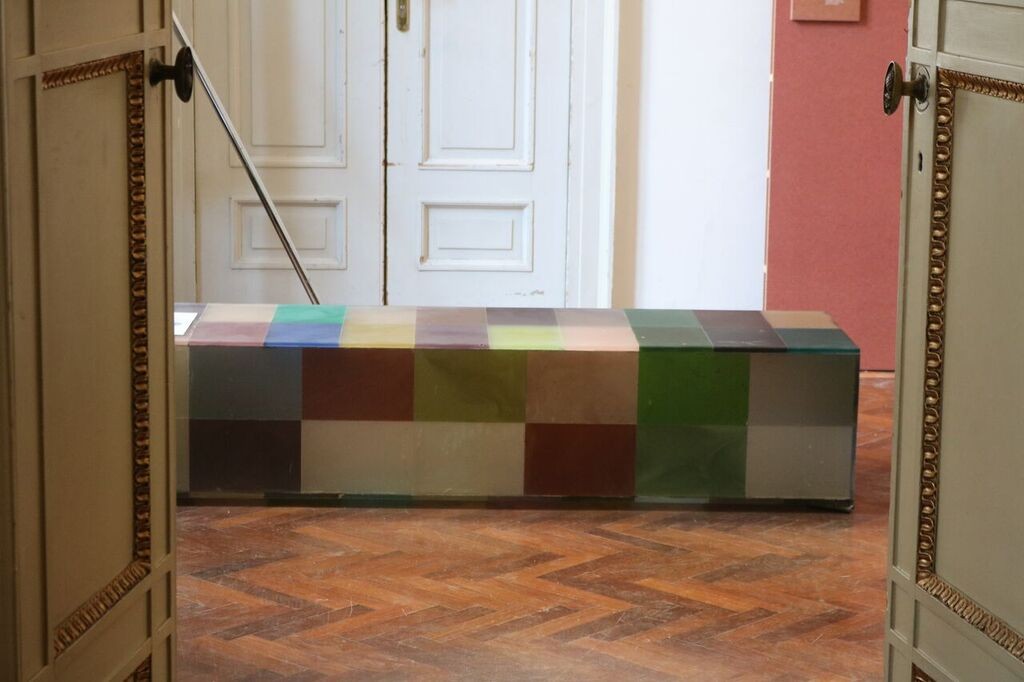
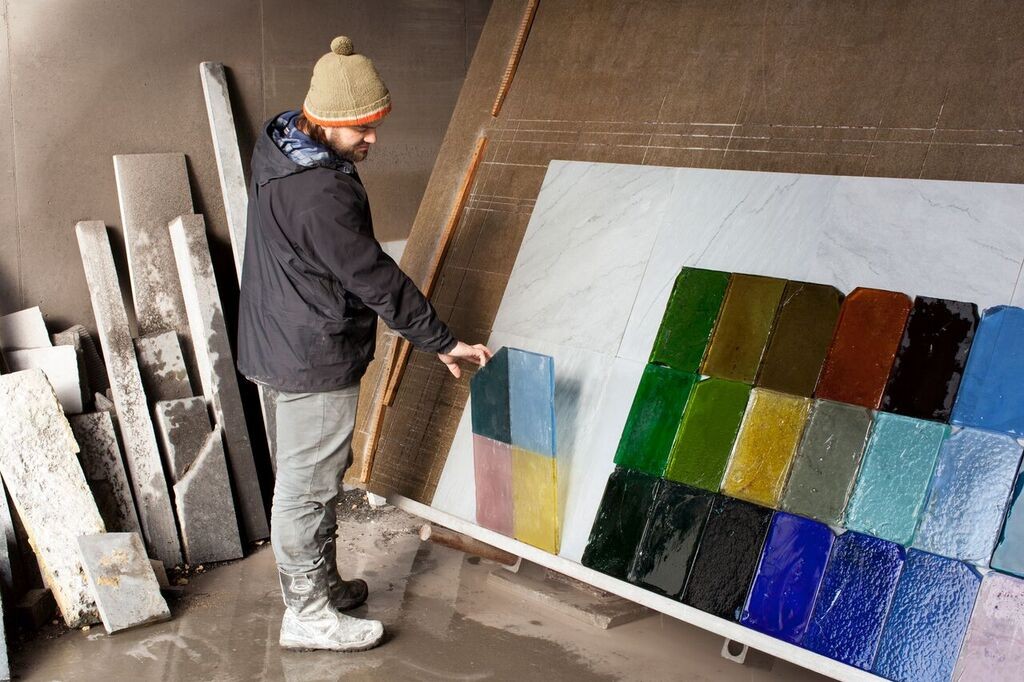 Image above courtesy of Julien Renault
Image above courtesy of Julien Renault
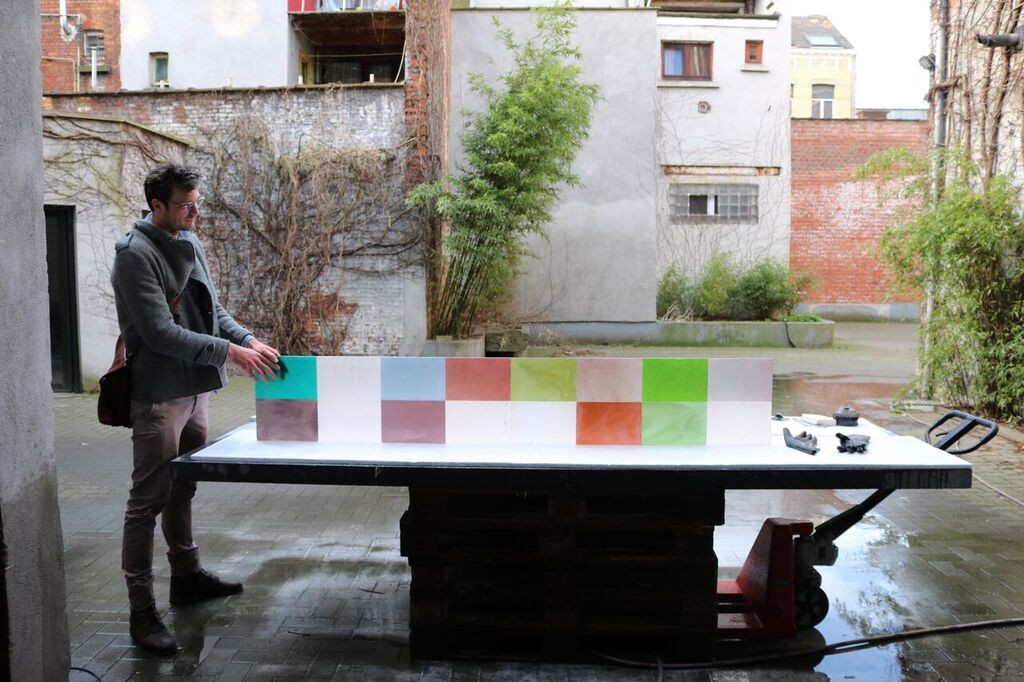

You have just completed the prototype of your new piece from the ‘In Stock l Glass’ collection for ‘Belgium is Design’ in the Palazzo Litta in Milan, curated by Damn Magazine. The objective of the exhibition was for each designer to work with a new, unknown to them, material. You chose glass and this prototype remarkably has no structure in another material – just glass! Tell us about this piece. The title for the collection, Instock refers to the amazing stock of materials my father has accumulated throughout his career. My parents had a business in reclaimed materials and stone masonry. I love the patina of these old materials. Objects can become more beautiful while aging, and some of the objects I’m working with have been around for centuries. The materiality of these objects will be the vantage point for every new piece in the collection. And the context they were found in is decisive too. The geometric aesthetics of the title ‘In Stock l Glass’ refer to the way the material was piled up on the wooden pallets when my father found it. This prototype wouldn’t exist if my father hadn’t stumbled across a pallet of beautiful translucent glass tiles from a glass factory that had gone out of business in a small village in France.
Join our mailing list to receive our blog posts and regular art and design updates from Paris and beyond!
Collecting Design Begins in Paris. Come Find your Inspiration!

